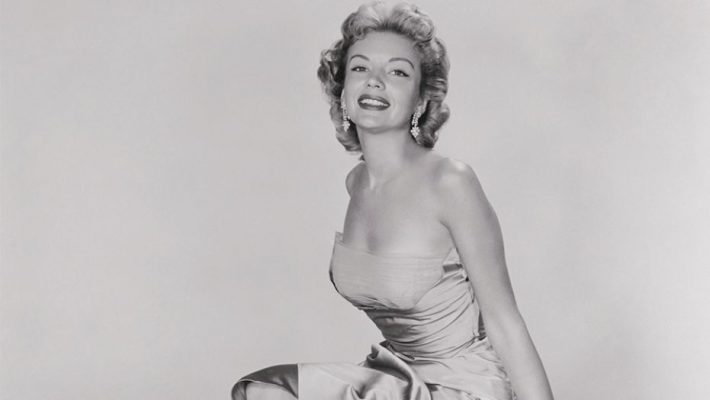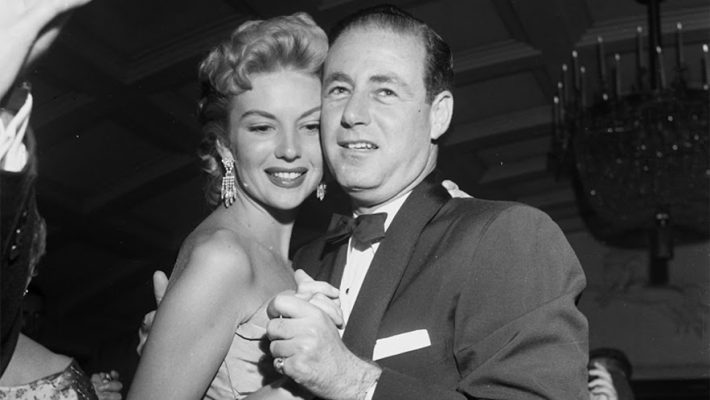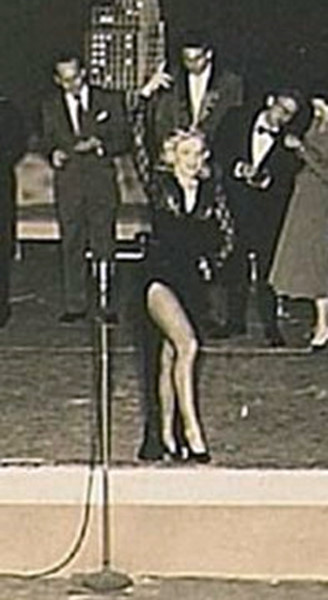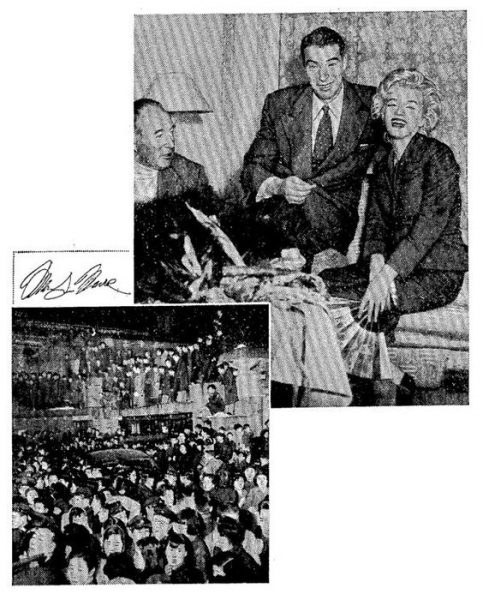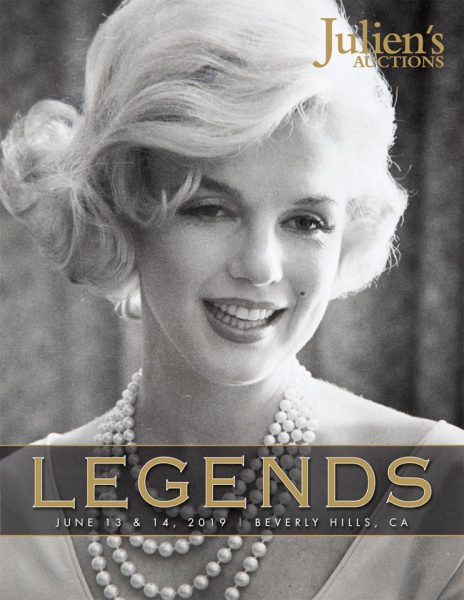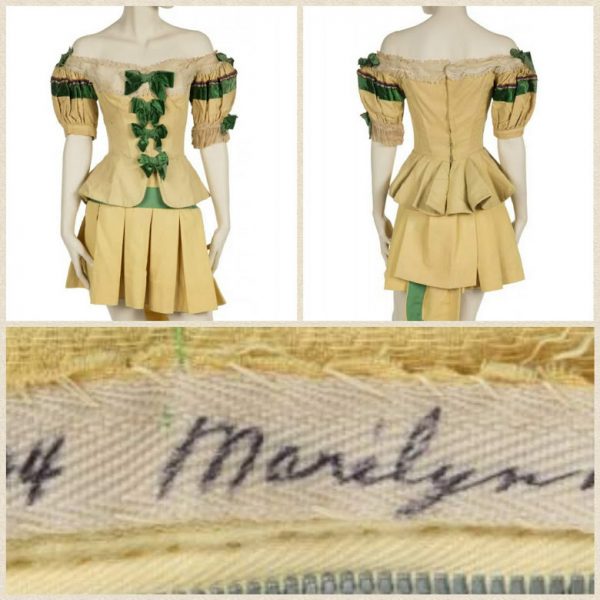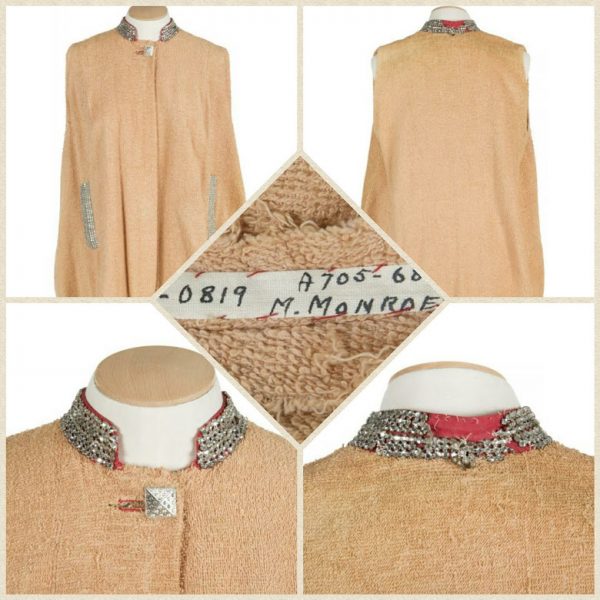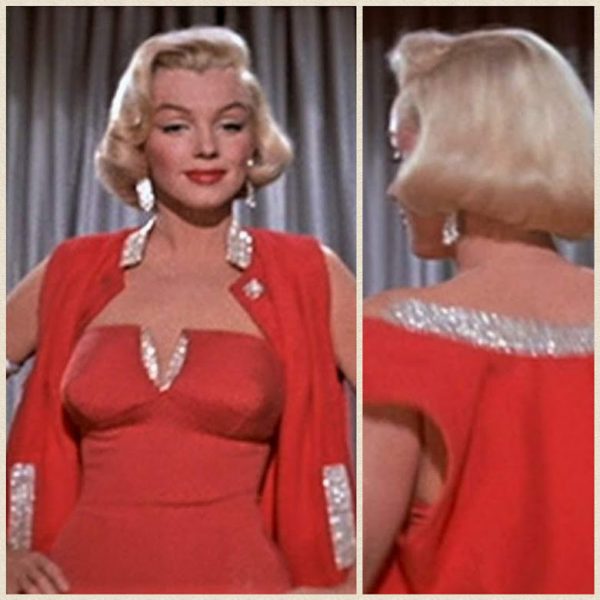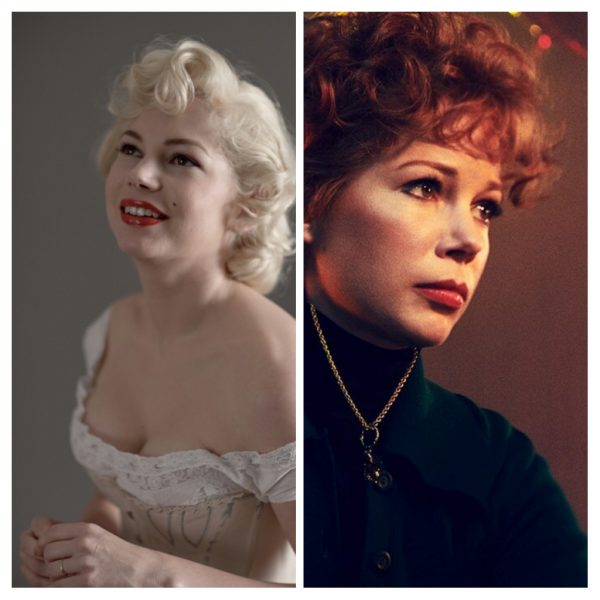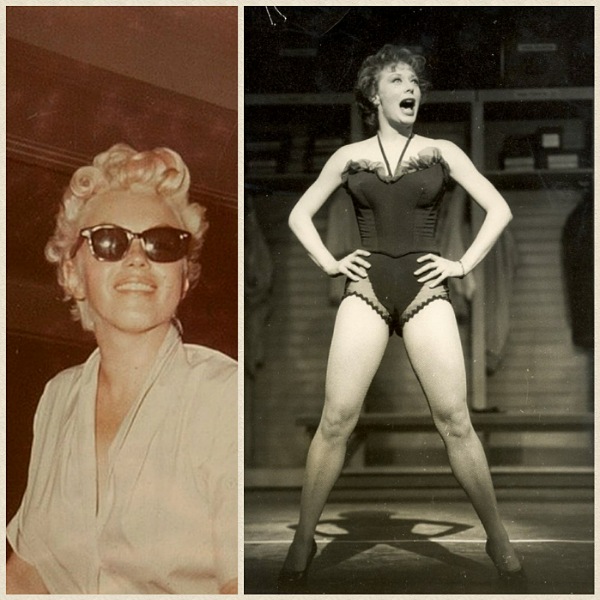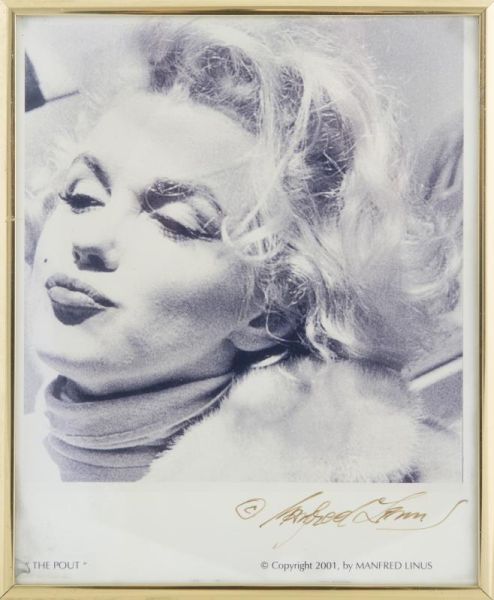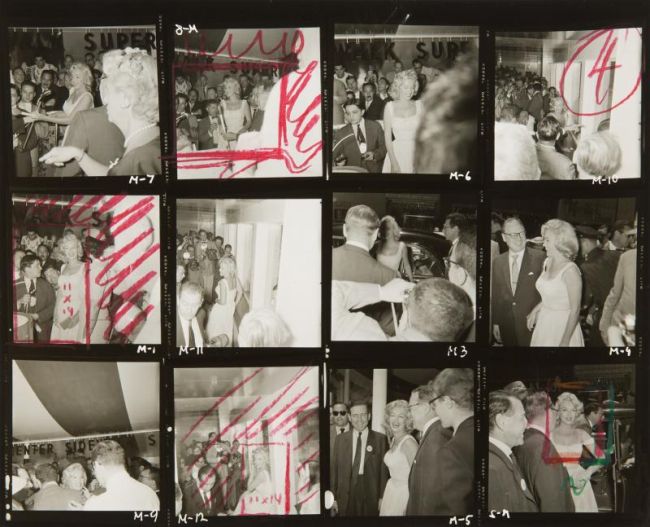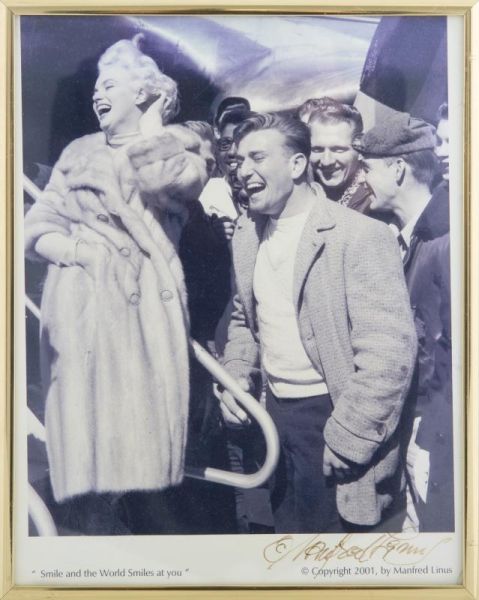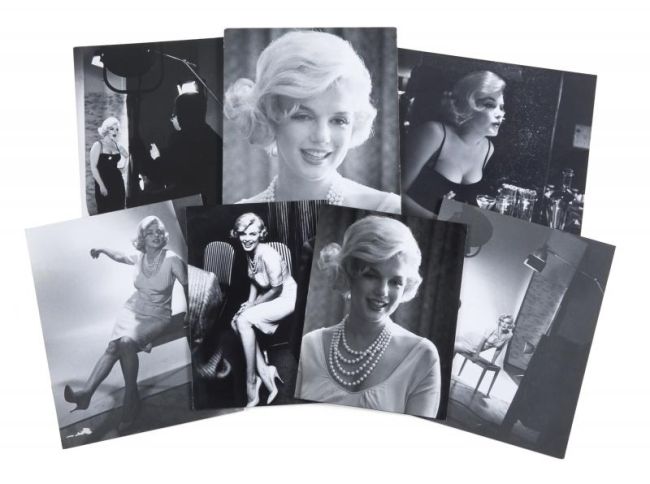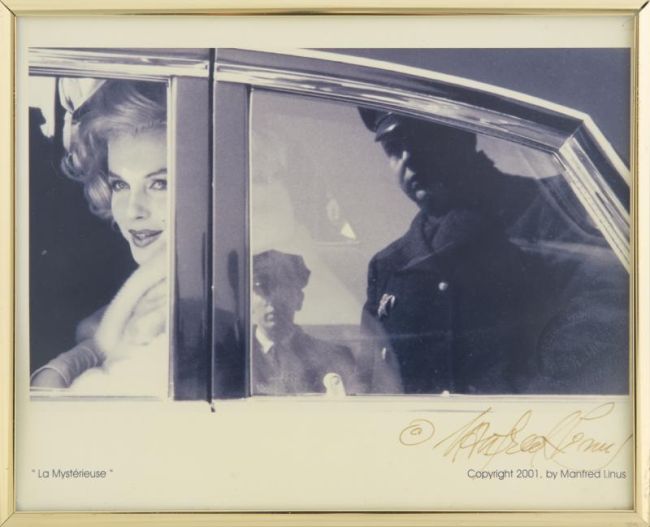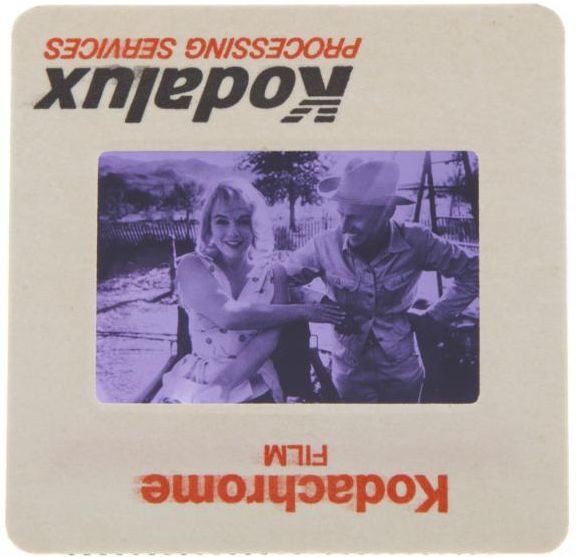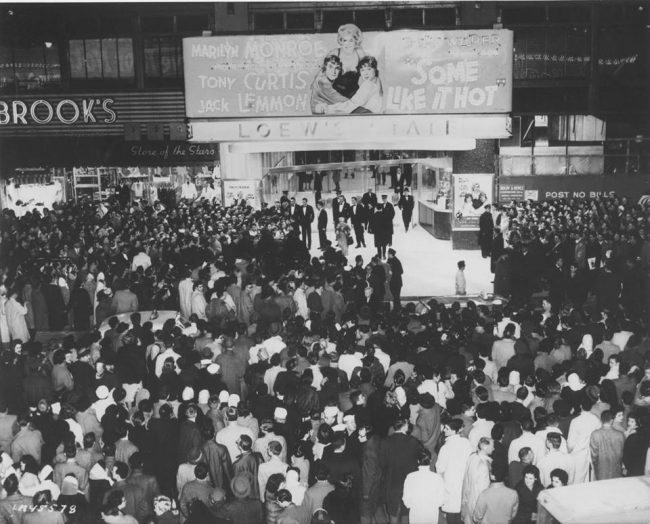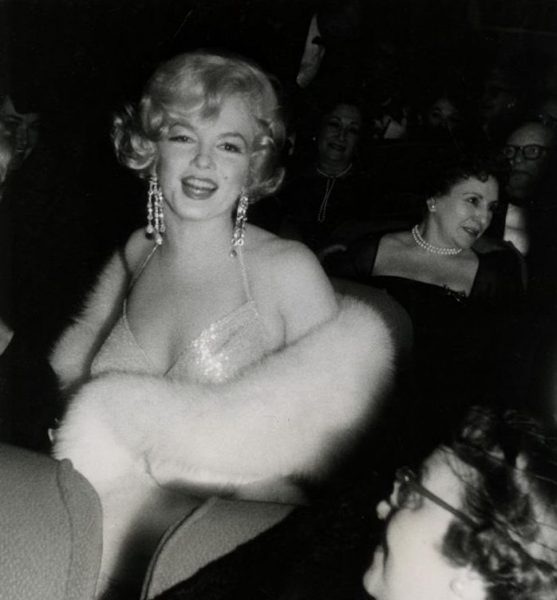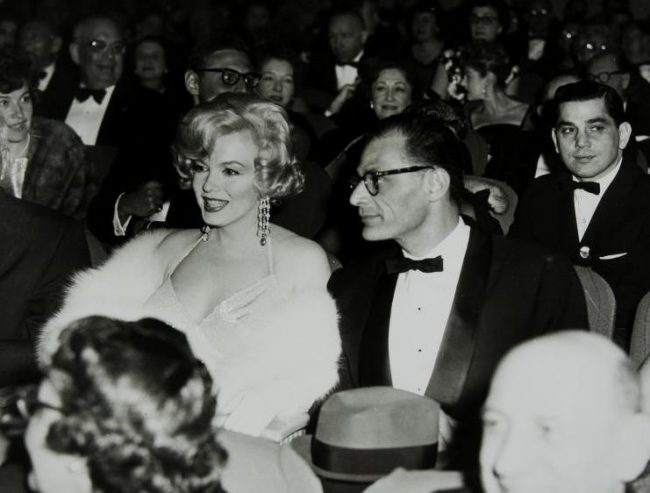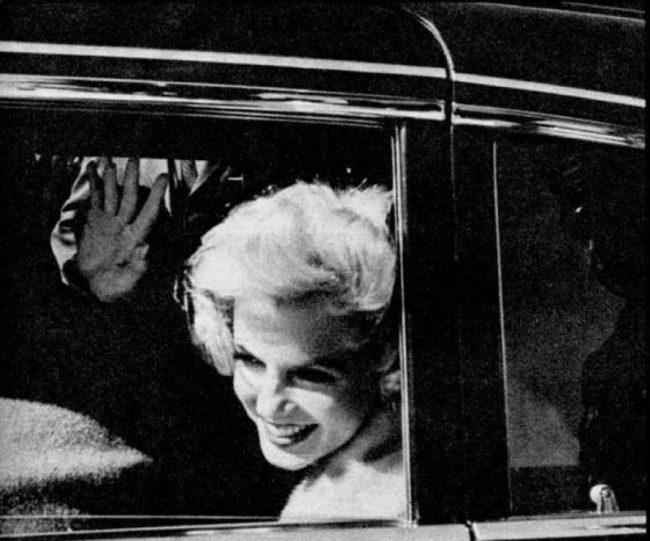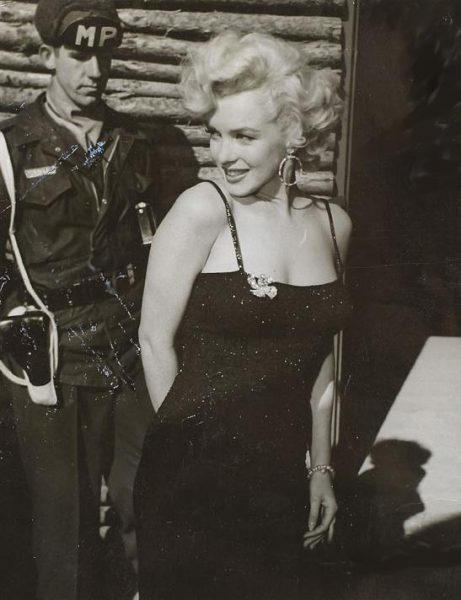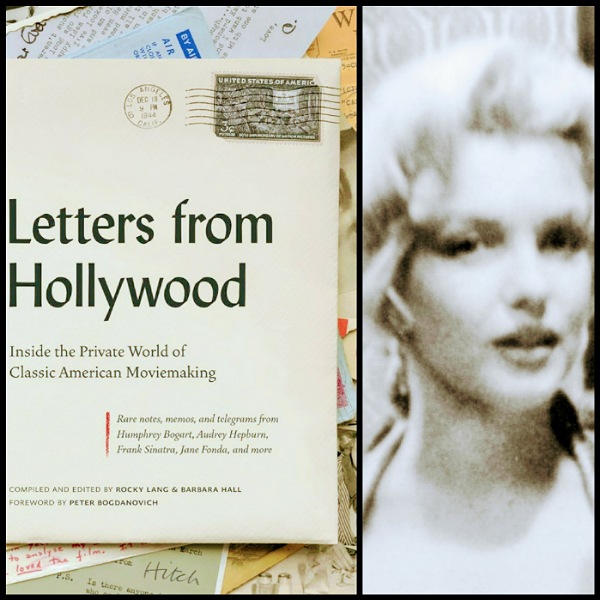
Letters From Hollywood: Inside the Private World of Classic American Film-Making – compiled and edited by Rocky Lang and Barbara Hall, with an introduction by Peter Bogdanovich – is the latest coffee table book from Abrams, the publisher who brought us MM – Personal and more recently, Hollywood Book Club. Marilyn’s own correspondence isn’t included (although she was featured in another anthology, Dear Los Angeles.)
However, Letters From Hollywood does include a reference to the night in 1956 when Marilyn met Queen Elizabeth II in a letter from Joan Crawford, also present at the London gala. Clearly Joan hadn’t changed her opinion of Marilyn’s revealing attire since publicly slating her in 1953 (see here.) And once again, her censorious tone does seem rather hypocritical – maybe she was triggered by Marilyn’s gold lamé…
“The book includes her handwritten 1956 note to Hollywood biographer and novelist Jane Kesner Ardmore about a royal premiere in London. After gushing about meeting Queen Elizabeth, Crawford included a few jabs at sex symbols Marilyn Monroe and Anita Ekberg.
Los Angeles Times
‘I was presented to the Queen last night — nearly died of excitement and fear,’ Crawford wrote. ‘Of course, I was not too happy about being presented with that group of people representing the Motion Picture Industry, such as Marilyn you-know-who, and Anita Ekberg. Incidentally, Marilyn and Anita were howled at because of their tight dresses — they could not walk off the stage. It was most embarrassing.'”

